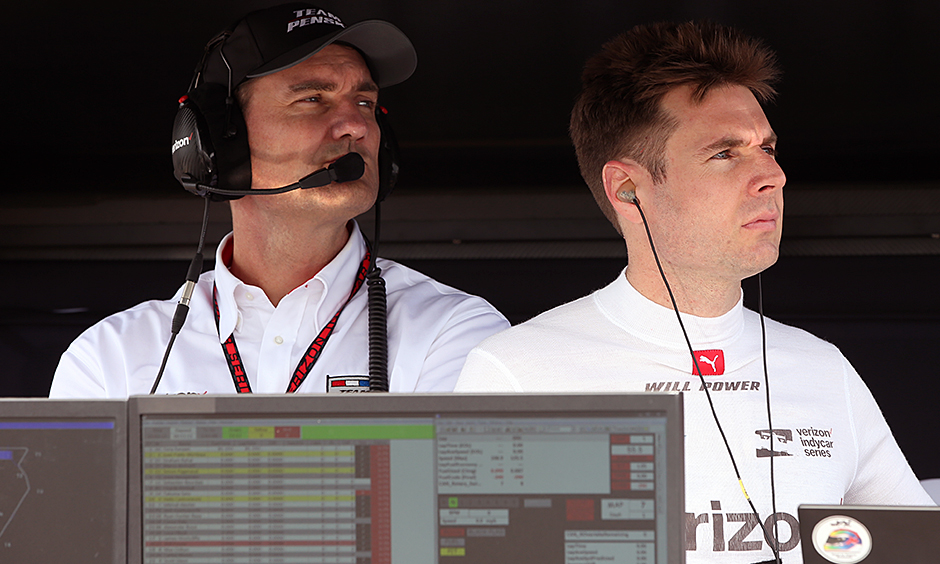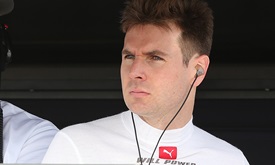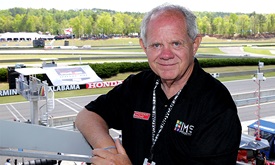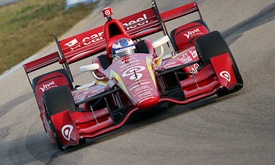Power's St. Pete weekend shows how INDYCAR concussion protocol works
MAR 16, 2016
The process worked. That was the unanimous determination of INDYCAR medical officials and Will Power after the Team Penske driver was held out of the season-opening Firestone Grand Prix of St. Petersburg with concussion-like symptoms on March 13 – even though further tests later determined he did not sustain a concussion.
Power, the 2014 Verizon IndyCar Series champion who had secured the pole position for the race and broke the track record in Verizon P1 Award qualifying March 12, admitted in a national media teleconference this afternoon that he wanted to race but that INDYCAR made the right decision.
“It couldn't have turned out any other way, really, when you have all those symptoms and the way I felt,” Power said.
Power crashed in the first practice session March 11. He initially checked out fine and the ear accelerometer he was wearing registered a G-force level from the incident lower than the threshold for potential concussions, according to Dr. Terry Trammell, INDYCAR safety consultant.
However, Power began suffering nausea, vertigo, neck stiffness and soreness later in the day, all symptoms consistent with a concussion. He won the pole March 12 despite worsening symptoms. After undergoing a concussion protocol test race morning conducted by INDYCAR medical director Dr. Geoffrey Billows, it was believed Power had suffered a mild concussion and he was not cleared to drive. Oriol Servia replaced Power in the No. 12 Verizon Team Penske Chevrolet for the race, finishing 18th.
The test Billows conducted at the track – the Sports Concussion Assessment Tool test (SCAT) – is based on the premise that the cause of symptoms is a concussion.
“It therefore quantitates the symptoms and gives a probability that you've had a concussion based on the numerical score for the symptoms,” Trammell said. “And that’s where the inner-ear infection came into play, as it was a near-perfect match symptom-wise for a concussion.
“If you have an inner-ear infection with fluid in the inner ear like Will did, that by itself can cause you to have a sense of balance disturbance, vertigo, can cause you then to be nauseated. It can produce a headache,” Trammell said. “Add to that fact that as Saturday went on, Will’s neck stiffness and soreness seemed to respond badly to loads under braking, and that causes increasing muscle tension, which also causes a headache.
“So now you have a driver that's nauseated, has a balance disturbance, vertigo, headache, can't concentrate very well, and you have him take the SCAT test, which he'll now fail. It's part of our concussion protocol to say that, if you fail a concussion assessment test, you have to be evaluated by a more definitive diagnostic test such as the ImPACT test before you can return to competition. We take the possibility of concussion very seriously and want to err on the side of caution rather than the other way around.”
Power did just that, flying to Miami on March 14 to undergo Immediate Post-concussion Assessment and Cognitive Testing (ImPACT) and a diffusion tensor MRI to definitively determine if he had been concussed. The tests were conducted by Dr. Stephen Olvey, the retired director of the Neurocritical Care Unit at Jackson Memorial Hospital in Miami. The results of the eight-hour, in-depth testing showed Power’s symptoms were not the result of a concussion, but rather the inner-ear infection.
“I think they did a terrific job,” Olvey said of the INDYCAR testing protocol. “There's really subtle findings now with concussion, and the symptomatology is one of them.
“(Power) had an accident and he had symptoms. Even though the accident was relatively minor, the symptoms were there. We did a recognized test (at the track) that is commonly used to detect a concussion. It was positive because of the symptoms that he was having, so they sent him (to Miami) to have a definitive evaluation. Erring on the side of being cautious, if you miss it and all kinds of catastrophic things can occur from it, then you'd really feel bad.
“INDYCAR has a terrific protocol in place for uncovering these occult kinds of concussions, and every once in a while there's going to be false positive tests. They need to be worked out and resolved, as has been done here. So I think the system worked quite well, actually.”
Power remains on medication for the inner-ear infection, but has been cleared to climb back into his No. 12 Chevrolet. He had to miss a private test March 15 involving many teams at Barber Motorsports Park in Birmingham, so the team has rescheduled a test for him at Barber on March 22.
“I’m feeling better,” Power said. “Obviously, it’s great to be cleared to be back in the car again. That’s the best medicine you can have. It was tough watching the race with someone else driving your car. That’s just the way it went. We’ve got to move forward.”
Tim Cindric, Team Penske president and Power’s race strategist, managed to find some humor in the situation.
“It was one of the more eventful weekends for this 12 car, that’s for sure,” Cindric said. “It’s good to have clarity on all those fronts. Will once again showed how hard-headed he was, so that’s probably a good thing.”
The next race for Power and the rest of the Verizon IndyCar Series is the Phoenix Grand Prix on the 1.022-mile Phoenix International Raceway oval. Practice and qualifying are scheduled for April 1, with the race under the lights at PIR on April 2 (8:30 p.m. ET, NBCSN).



















